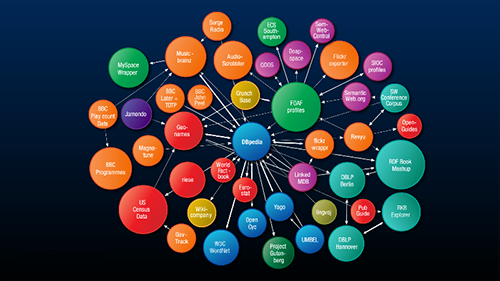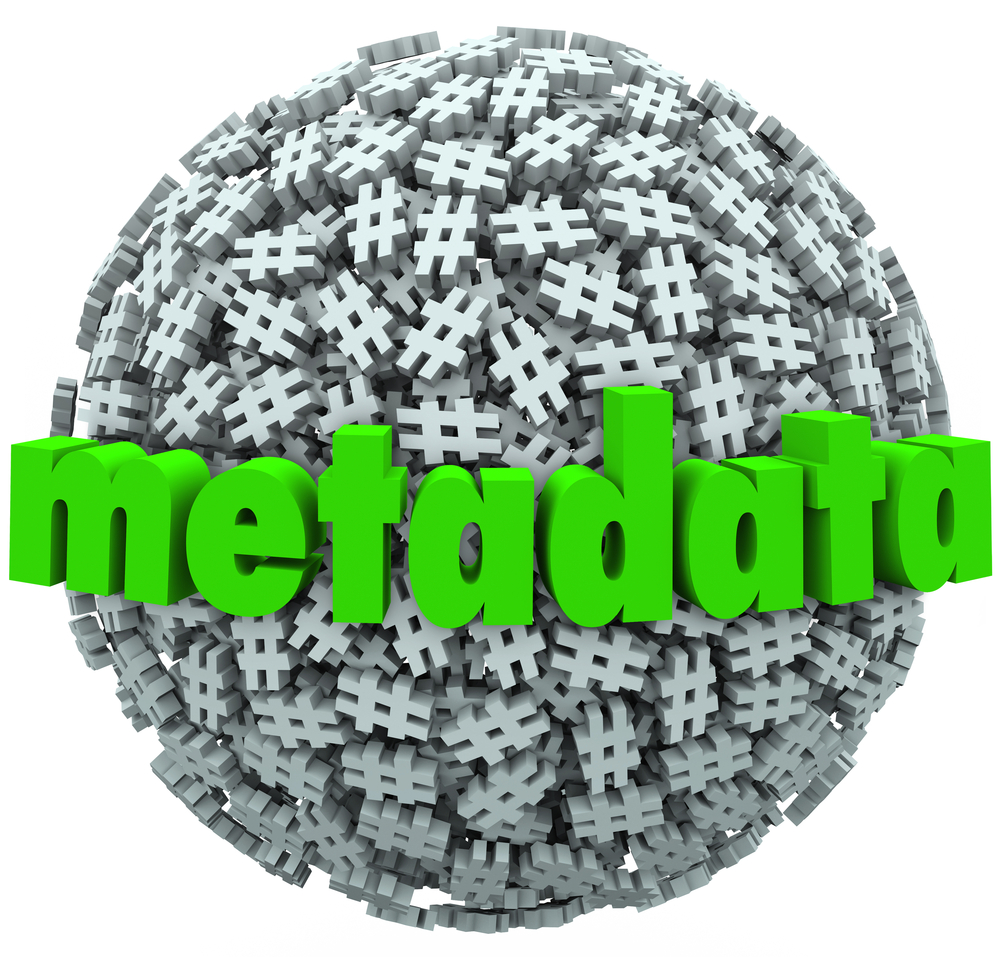
A Semantic Approach to Big Data Governance

There is a burgeoning need for a standards-based, semantic approach to data governance. It is responsible for worming semantics technologies from the back offices of organizations to the forefront of some of the most pervasive applications of data and their relevance throughout the entire enterprise today.
Big data and its democratization is responsible for demonstrating to organizations the practical value of semantics by enabling them to maintain and improve governance principles over unruly unstructured and semi-structured data. By demonstrating tangible relationships between data elements that discern meaning, standards-based ontological models, vocabularies, and terminology systems are a vital means of implementing big data governance in a sustainable way.
“Governance depends very heavily on preserving meaning,” TopQuadrant co-founder, CMO and VP of Professional Services Robert Coyne reflected. “In these complex ecosystems of systems, data and people, it’s very difficult to preserve meaning and relate meaning through relationships of things that are in different applications and parts of transactions. What semantic standards offer is an operational way to aid the preservation of meaning.”
Common Terms
Semantic technologies play a pivotal role in a key aspect of governance—denoting common terms and definitions that are either used across business units or across the enterprise itself. Vocabularies enhanced by taxonomies can augment those definitions while filling out a repository of such terms by clarifying their meanings and the numerous points of differentiation in spelling and references for a common definition.
According to Franz CEO Jans Aasman: “For internal compliance and compliance with the government, you really want to use the same words for the same thing. Too many times different departments will use different names for the same things. Far worse, they use the same words for different things.”
Most importantly, the utilization of taxonomies (classifications or principles about terms) can account for the inclusion of unstructured and semi-structured data and still provide a unified, organization-wide meaning to disparate references to terms found in sentiment analysis and other forms of big data.  This capability is particularly useful for implementing governance policy in programs started after a particular business process or function, which is what frequently occurs “in the real world,” according to Aasman.
This capability is particularly useful for implementing governance policy in programs started after a particular business process or function, which is what frequently occurs “in the real world,” according to Aasman.
Big Data Modeling
Ontological models provide descriptions of data elements and are able to express the relationships between them in a visual manner that is readily discernible to end users. “The idea is to put the human being in a more powerful context where they’re very well plugged in and informed, and have a rich system that they can navigate,” Coyne commented.
In a standards-based environment, these models provide the basis for an accessible way of managing data governance hallmarks such as metadata, reference data, and business glossary mapping. Due to the granular nature of ontologies, their definitions, and the relationships they illuminate (particularly in semantic graph environments), they facilitate an integration and interoperability between various models that would otherwise not be possible—or consume too much time and resources to implement.
Organizations can integrate all of their various forms of metadata (business, technical, security, governance) with ontological models of virtually any type while still ensuring metadata and semantic consistency. According to Aasman: “Data governance is both about the schema and about the data. When you talk about the schema you actually talk more about the ontological thinking, about structuring your data. But the data is more freeform and the data is something that you can capture with vocabularies and terminology systems and taxonomies.”
Meta Relations and More
“Meta relations is just as important as metadata because the meaning is in the relationships between things,” observed Ralph Hodgson, the TopQuadrant co-founder and executive VP and director of TopBraid Technologies.
In addition to facilitating metadata consistency, ontological models also yield information about the meaning of data through their relationships with other data. Meta relations is defined by Hodgson as “the affiliations between things,” and combines with metadata and vocabularies to provide well governed integration of data between sources and uses. This approach is much more  applicable to the rich array of options for managing metadata via governance solutions that incorporate semantic technologies, as opposed to those that don’t.
applicable to the rich array of options for managing metadata via governance solutions that incorporate semantic technologies, as opposed to those that don’t.
Using a semantic approach, organizations can relate their metadata to specific business functions. There’s also a degree of self-service imbued by utilizing ontological models for basic governance of metadata, reference data, and other data types. End users are able to link different sets of such data, add attributes and metadata about them at will, and update them simultaneously across different systems. “Ontology models, standards-based, are part of the system; they live in the system. They’re run-time models that can be evolved, queried, and extended,” Coyne remarked.
Regulatory Compliance
In addition to the advent of Big Data, one of the key drivers of the contemporary relevance of a semantic approach to big data governance is the onslaught of compliance regulations in numerous industries—particularly finance and health care—in which the governance objectives of “avoiding chaos and reducing risk” noted by Aasman are paramount. Ontologies can directly address compliance issues by creating models based entirely on specific regulations, which can readily integrate with metadata and other facets of compliance based on regulations.
Furthermore, such models can be used to implement a number of critical controls to facilitate compliance. The autonomy granted by the self-service nature of these models is circumscribed by governance solutions that provide sandboxes for immediate trials of changes, prior to an orderly means of implementation according to governance procedures. Additionally, access is both granted and restricted to users according to the roles and responsibilities mandated by governance councils based on instructions directed towards triples, which arguably represent the foundation of semantics. In much the same way, traceability and the provenance of data is also facilitated.
Security
In addition to facilitating internal security via role-based access to data, a standards-based approach to semantics is useful for providing security for external threats as well. When combined with requisite architectures and big data analytics, ontological models can be created to detect the awareness of vulnerabilities. Moreover, organizations can link them to business functions for contingencies. According to Aasman, metadata can also provide insight into security issues.
“You have to look at the metadata of the IP numbers that are trying to invade you,” he said. “What kind of applications are coming at you? What kind of packets? How often is it coming to you? Is this guy related to that guy…The graph database nature of semantic graph databases makes it easier to work with network [security].”
Implementing Big Data Governance
Semantic technologies can greatly abet an organization’s ability to remain consistent in its use of terms and their definitions, metadata, and modeling to achieve goals for regulatory compliance. Moreover, they are essential to determining relationships and ascertaining both context and meaning from them, regardless of different systems. However, they can only augment, and not replace, the foundation of data governance: the roles, responsibilities and rules upon which an enterprise’s data is based.
As Coyne mentioned: “Data governance is growing as a set of practices, and software and systems are an integral part of that. But they’re only a part. What you have at the higher level is communities of practice and policy. Those things are really critical for regulating who is empowered within the organization to make changes.”
About the author: Jelani Harper has written extensively about data management for the past several years. He specializes in semantic technology, big data, and their many different applications.
Related Items:
Hadoop, Triple Stores, and the Semantic Data Lake
Medical Insight Set to Flow from Semantic Data Lakes
Driving MapReduce into the Semantic Web
June 13, 2025
- PuppyGraph Announces New Native Integration to Support Databricks’ Managed Iceberg Tables
- Striim Announces Neon Serverless Postgres Support
- AMD Advances Open AI Vision with New GPUs, Developer Cloud and Ecosystem Growth
- Databricks Launches Agent Bricks: A New Approach to Building AI Agents
- Basecamp Research Identifies Over 1M New Species to Power Generative Biology
- Informatica Expands Partnership with Databricks as Launch Partner for Managed Iceberg Tables and OLTP Database
- Thales Launches File Activity Monitoring to Strengthen Real-Time Visibility and Control Over Unstructured Data
- Sumo Logic’s New Report Reveals Security Leaders Are Prioritizing AI in New Solutions
June 12, 2025
- Databricks Expands Google Cloud Partnership to Offer Native Access to Gemini AI Models
- Zilliz Releases Milvus 2.6 with Tiered Storage and Int8 Compression to Cut Vector Search Costs
- Databricks and Microsoft Extend Strategic Partnership for Azure Databricks
- ThoughtSpot Unveils DataSpot to Accelerate Agentic Analytics for Every Databricks Customer
- Databricks Eliminates Table Format Lock-in and Adds Capabilities for Business Users with Unity Catalog Advancements
- OpsGuru Signs Strategic Collaboration Agreement with AWS and Expands Services to US
- Databricks Unveils Databricks One: A New Way to Bring AI to Every Corner of the Business
- MinIO Expands Partner Program to Meet AIStor Demand
- Databricks Donates Declarative Pipelines to Apache Spark Open Source Project
June 11, 2025
- What Are Reasoning Models and Why You Should Care
- The GDPR: An Artificial Intelligence Killer?
- Fine-Tuning LLM Performance: How Knowledge Graphs Can Help Avoid Missteps
- It’s Snowflake Vs. Databricks in Dueling Big Data Conferences
- Snowflake Widens Analytics and AI Reach at Summit 25
- Top-Down or Bottom-Up Data Model Design: Which is Best?
- Why Snowflake Bought Crunchy Data
- Inside the Chargeback System That Made Harvard’s Storage Sustainable
- Change to Apache Iceberg Could Streamline Queries, Open Data
- dbt Labs Cranks the Performance Dial with New Fusion Engine
- More Features…
- Mathematica Helps Crack Zodiac Killer’s Code
- It’s Official: Informatica Agrees to Be Bought by Salesforce for $8 Billion
- AI Agents To Drive Scientific Discovery Within a Year, Altman Predicts
- Solidigm Celebrates World’s Largest SSD with ‘122 Day’
- DuckLake Makes a Splash in the Lakehouse Stack – But Can It Break Through?
- The Top Five Data Labeling Firms According to Everest Group
- Who Is AI Inference Pipeline Builder Chalk?
- IBM to Buy DataStax for Database, GenAI Capabilities
- ‘The Relational Model Always Wins,’ RelationalAI CEO Says
- VAST Says It’s Built an Operating System for AI
- More News In Brief…
- Astronomer Unveils New Capabilities in Astro to Streamline Enterprise Data Orchestration
- Yandex Releases World’s Largest Event Dataset for Advancing Recommender Systems
- Astronomer Introduces Astro Observe to Provide Unified Full-Stack Data Orchestration and Observability
- BigID Reports Majority of Enterprises Lack AI Risk Visibility in 2025
- Gartner Predicts 40% of Generative AI Solutions Will Be Multimodal By 2027
- Databricks Announces Data Intelligence Platform for Communications
- MariaDB Expands Enterprise Platform with Galera Cluster Acquisition
- Databricks Unveils Databricks One: A New Way to Bring AI to Every Corner of the Business
- Databricks Announces 2025 Data + AI Summit Keynote Lineup and Data Intelligence Programming
- FICO Announces New Strategic Collaboration Agreement with AWS
- More This Just In…


























